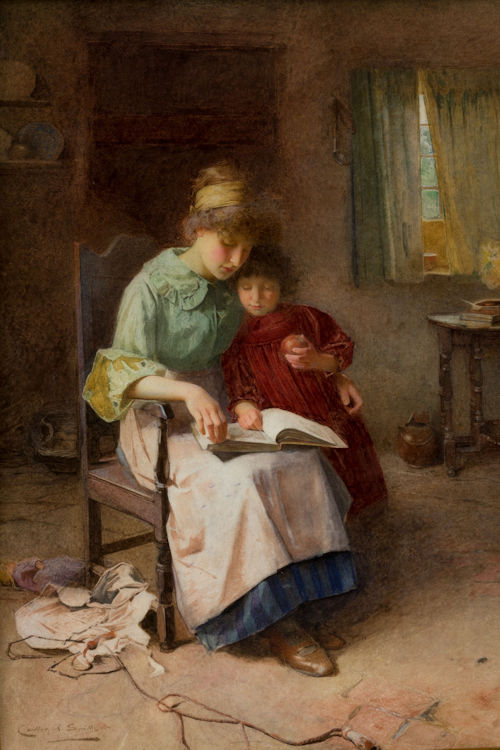“The question is not, – how much does the youth know? when he has finished his education – but how much does he care? and about how many orders of things does he care? In fact, how large is the room in which he finds his feet set? and, therefore, how full is the life he has before him?” -Charlotte Mason

Children possess an innate desire to understand the world around them. They want to comprehend the relationship between the things they interact with and decipher how those relationships will affect their lives. Just like adults, they are motivated by meaning and purpose, and they want to know that what they are learning is useful.
I created Foundational Phonics because I wanted to help mothers demonstrate the natural relationship between sounds, letters, words, and sentences to their children. I wanted every lesson to be both memorable and meaningful, so that children establish a solid, sure footing in reading from the very beginning.
Research has proven that a multi-sensory approach builds stronger pathways in a child’s brain by presenting information in a variety of formats that engage multiple senses (visual, auditory, tactile, kinesthetic, olfactory, and taste). It has also been scientifically proven that children who struggle with dyslexia can often overcome their challenges by utilizing a multi-sensory approach for reading.
Both of the books in the Foundational Phonics series, Letter Mastery and Word Mastery, include fun, interactive exercises that reach children through multiple learning channels and help you take the guesswork out of teaching your child to read.
No need for you to read page after page of complicated directions before every lesson. No scripted lessons to stumble through. No hours of prepping games that need to be cut out and organized. No complicated manipulatives to distract your student. No specialized training required. Both books are open-and-go and include everything you need.
Foundational Phonics allows the mother-teacher to employ the best, most time-tested methods to help her students learn to read in an effective, enjoyable way.
In Letter Mastery (Book One), the focus is placed on ear, eye, and tongue training to allow students to understand the correlation between the words they hear, see, and say.

In addition to the prompts included in this book, mothers may try other multi-sensory activities like the ones mentioned below:
- Write the letters for new sounds in the air or sand.
- Stamp the letters for new sounds on paper.
- Build words out of playdough, pipe cleaners, or letter tiles.
- Build words with flashcards.
- Search for new letters or letter blends in magazines, books, or junk mail.
- Reinforce and practice eye, ear, and tongue training by listening to high-interest stories containing sounds and letters they know.
- Learn the American Sign Language (ASL) alphabet so they can “feel” the new letters as they say them.
- Practice reading and writing the letters they learn.
Through a logical and structured progression, Word Mastery (Book Two) allows students to build upon the principles they learned in Letter Mastery. Using copywork and diacritical marks to further their understanding of the patterns that words typically follow, they learn how these patterns aid them in both pronunciation and spelling.
Lessons in Word Mastery include but are not limited to:
- Copying words and sentences to practice newly learned patterns, proper sentence structure, and punctuation.
- Marking the proper diacritical marks for long and short vowel sounds, as well as denoting special sounds like buzzing s or silent e. (This helps the student internalize the correct pronunciation of words they regularly encounter.)
- Extending the use of ASL from Book One to practice spelling high-frequency words or words with unusual spellings.
I recommend that you use Letter Mastery and Word Mastery in succession, even if you think your child has already covered the skills taught in both. While your child may have been exposed to certain concepts, it’s important that key skills are truly mastered before moving on to more challenging work. Also, familiarity with words and their patterns breeds confidence, which in turn breeds success. This sets your students up with a firm foundation in reading that will benefit them for a lifetime.
